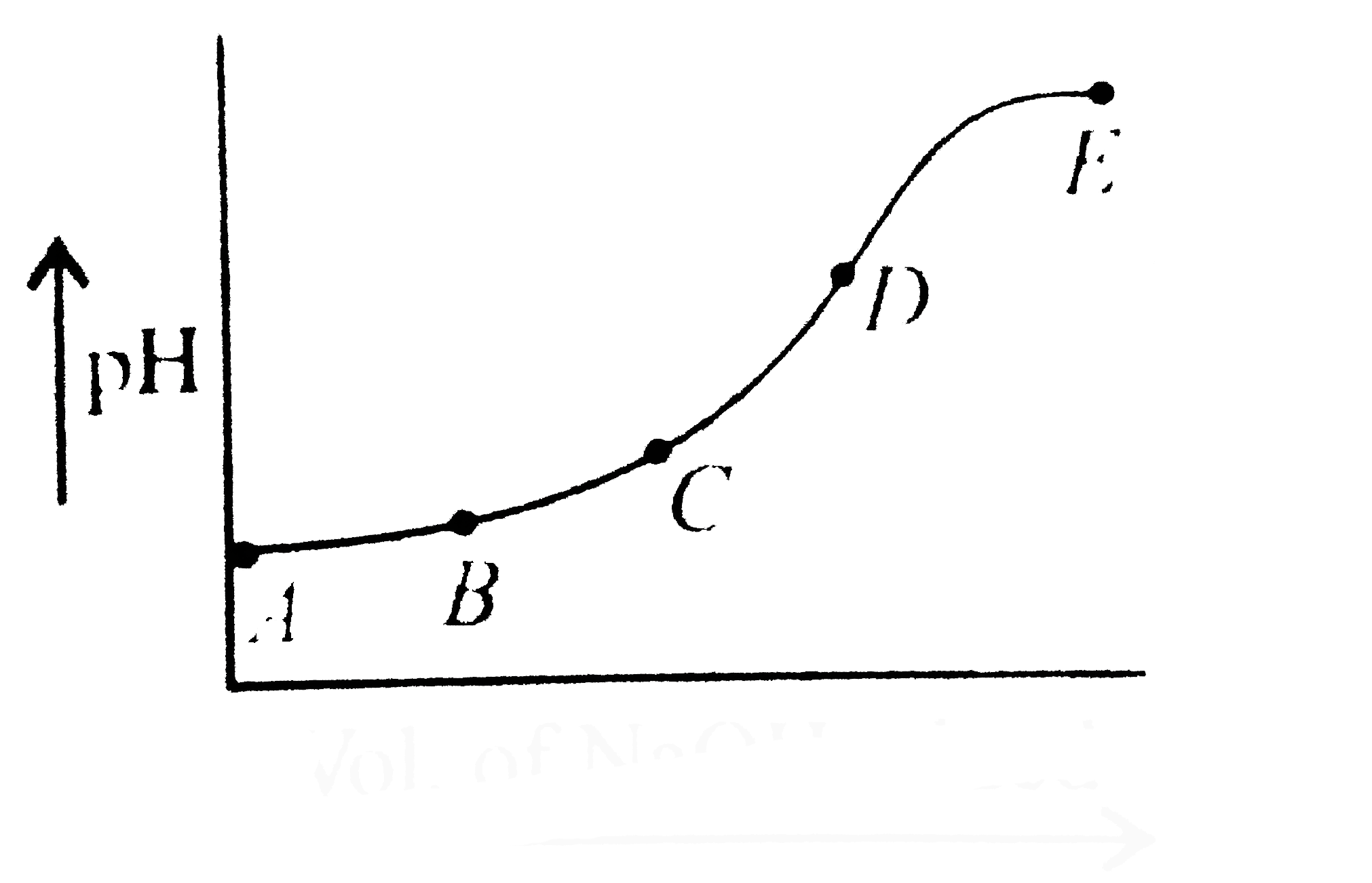An acid-base indicator which is a weak acid has a pKIn value =5.45. At what concentration ratio of sodium acetate to acctic acid would the indicator show a colour half-way between those of its acid and conjugate base forms ?
[pKa of acetic acid =4.75, log 2=0.3]
4:1
6:1
5:1
3:1
The correct Answer is:C
To solve the problem, we need to find the concentration ratio of sodium acetate (the conjugate base) to acetic acid (the weak acid) at which the indicator shows a color halfway between its acid and conjugate base forms.
1. Understand the Concept of pH and pKa:
The pH of a solution can be expressed using the Henderson-Hasselbalch equation:
pH=pKa+log((Base)(Acid))
Here, the base is sodium acetate and the acid is acetic acid.
2. Set the Condition for Halfway Color Change:
When the indicator shows a color halfway between its acid and conjugate base forms, the pH of the solution will equal the pKa of the indicator. Thus, we set:
pH=pKIn=5.45
3. Substitute Known Values:
We know the pKa of acetic acid is given as 4.75. We can substitute this into the Henderson-Hasselbalch equation:
5.45=4.75+log((CH3COONa)(CH3COOH))
4. Rearranging the Equation:
Rearranging the equation gives:
5.45−4.75=log((CH3COONa)(CH3COOH))
0.7=log((CH3COONa)(CH3COOH))
5. Convert Logarithmic Form to Exponential Form:
To find the concentration ratio, we take the antilog of both sides:
(CH3COONa)(CH3COOH)=100.7
6. Calculate the Antilog:
Using the approximation 100.7≈5 (since 100.3≈2):
(CH3COONa)(CH3COOH)≈5
7. Final Concentration Ratio:
Therefore, the concentration ratio of sodium acetate to acetic acid is:
Ratio=5:1
Conclusion:
The concentration ratio of sodium acetate to acetic acid at which the indicator shows a color halfway between those of its acid and conjugate base forms is 5:1.
The pH of a solution can be expressed using the Henderson-Hasselbalch equation:
pH=pKa+log((Base)(Acid))
Here, the base is sodium acetate and the acid is acetic acid.
When the indicator shows a color halfway between its acid and conjugate base forms, the pH of the solution will equal the pKa of the indicator. Thus, we set:
pH=pKIn=5.45
We know the pKa of acetic acid is given as 4.75. We can substitute this into the Henderson-Hasselbalch equation:
5.45=4.75+log((CH3COONa)(CH3COOH))
Rearranging the equation gives:
5.45−4.75=log((CH3COONa)(CH3COOH))
0.7=log((CH3COONa)(CH3COOH))
To find the concentration ratio, we take the antilog of both sides:
(CH3COONa)(CH3COOH)=100.7
Using the approximation 100.7≈5 (since 100.3≈2):
(CH3COONa)(CH3COOH)≈5
Therefore, the concentration ratio of sodium acetate to acetic acid is:
Ratio=5:1
The concentration ratio of sodium acetate to acetic acid at which the indicator shows a color halfway between those of its acid and conjugate base forms is 5:1.
Topper's Solved these Questions
- IONIC EEQUILIBRIUMBOOK - NARENDRA AWASTHI ENGLISHCHAPTER - IONIC EEQUILIBRIUMEXERCISE - Level- 2
35 Videos
- IONIC EEQUILIBRIUMBOOK - NARENDRA AWASTHI ENGLISHCHAPTER - IONIC EEQUILIBRIUMEXERCISE - Level- 3
19 Videos
- GASEOUS STATEBOOK - NARENDRA AWASTHI ENGLISHCHAPTER - GASEOUS STATEEXERCISE - Subjective problems
15 Videos
- SOLID STATEBOOK - NARENDRA AWASTHI ENGLISHCHAPTER - SOLID STATEEXERCISE - Subjective Problems
13 Videos
Similar Questions
Calculate the pH of 0.05M sodium acetate solution, if the pKa of acetic acid is 4.74.
View SolutionIf Ka and Kb are the dissociation constants of weak acid and its conjugate base , pKa+pKb
View SolutionWhen 0.2M solution of acetic acid is neutralised with 0.2MNaOH in 500mL of water, the pH of the resulting solution will be: [pKa of acetic acid =4.74]
View SolutionA hydrogen electrode placed in a solution containing sodium acetate and acetic acid in the ratio of x:y and y:x, ahs electrode potential values of −1.5 and −0.5V, respectively. What is the pKa value of acetic acid?
View SolutionCalculate the pH at which the concentration of a monobasic acid HA equals the concentration of its conjugate base at equilibrium. (Ka=2×10−5, log2=0.3)
View SolutionIf ionisation constant of an acid (HA) at equilibrium is 1.0×10−8 then calculate the value of pKaandpKb (for its conjugate base).
View SolutionA hydrogen electrode placed in a solution containing sodium acetate and acetic acid in the ratio of x:y and y:x has an electrode potential value E1 and E2 volts, respectively, at 25∘C. The pKa value of acetic acid is _____
View SolutionThe following curve shows the change of pH during the course of titration of weak acid HA with a strong base. At which point in the titration curve is the concentration of acid equal to that of its conjugate base.

View SolutionpKa value for acetic acid at an experimental temperature is 5. The percentage hydrolysis of 0.1 M sodium acetate solution will be
View SolutionThe degree of dissociation of acetic acid in a 0.1 M solution is 1.0×10−2. The pKa of acetic acid value.
View Solution
